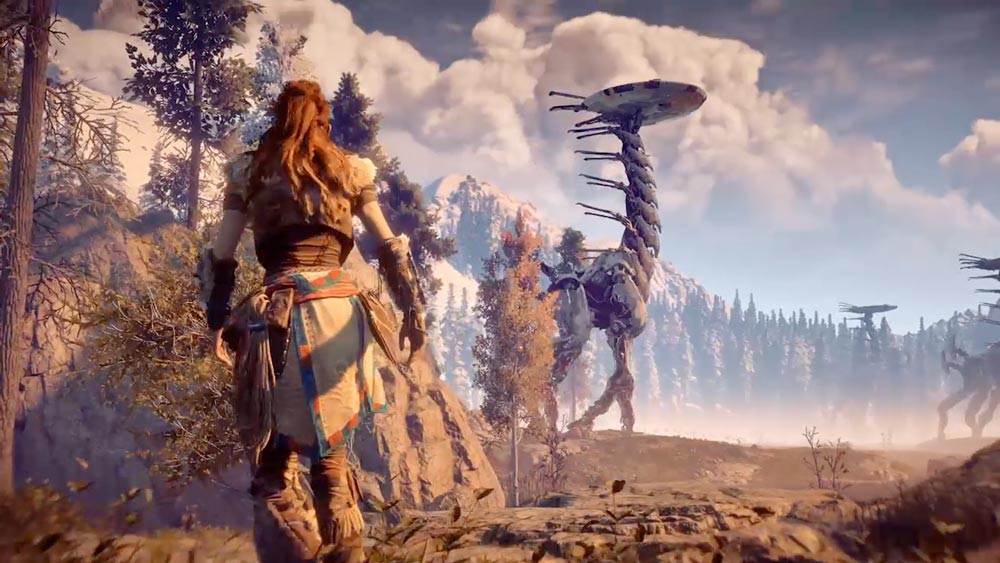
Everyone seems to talk about computer graphics. Not everyone, maybe, but certainly a massive portion of the Reddit communities I read. People always like to brag up their own machine's graphical capabilities and dunk on the inferior setups of the plebs around them. The graphical quality of a system or game often comes up as a defining reason for why a person will or will not play a game. In film as well, people will praise some films for terrific use of computer graphics while absolutely hammering others as absolute messes of CGI nonsense. Personally, I love what graphics can add to modern entertainment and my graphics and VFX courses have been the highlights of my time at Notre Dame, but I do not think they are everything. The important thing to me is that visuals add to the overall experience, and not attempt to be the whole experience.
In September of 1996, one of the most significant achievements in computer graphics was achieved, and the lives of every person living and past and yet to come would be altered irrevocably. Probably. Because this was when Naughty Dog and Sony Computer Entertainment brought the wacky world of Australian animals to the big time in the form of a genetically mutated bandicoot named Crash and his effort to thwart the mischievous plots of Dr. Neo Cortex. I could literally write a book on the beauty and lore that is the world of Crash Bandicoot, and some if it may even be canon and not a huge arcing meta-story that I use when going through the entire series over a spring break, but that would not go into what this title meant for graphics moving forward. What Crash did was it used the video capabilities of the PlayStation OG while emphasizing polygons over textures (*GASP*). Now, programmers had way more polygons, able to work around the system's lack of texture correction and polygon clipping. As I think was mentioned this week, the game was made to feel cartoon, using vertex animation instead of skeletal, using a much more sophisticated three-to-four joint weighting instead of a traditional one-joint. Getting the detail that at the time was astounding (and I still think looks decent today) involved a pretty buckwild mix of algorithmic texture packers and level design tools that worked around the limited memory, hidden paths and environmental pieces to keep to the 800 polygon limit, and a bunch of bidirectional 10x compressors to keep the 128-megabyte levels to the 12 allowed by the PlayStation's RAM. But I don;t love the game because I love the development tools that made it or the interesting stories of working around the limited hardware, I love it because it is a fun platformer title with a unique style that really vibes with me personally and characters that I love over a long series of games that I grew up with and keep close to this day. Yes, it is great that the graphics are as they are and the game got credit from critics for this, but that alone is not what makes it great and important to me.

In general, graphics have improved significantly over the years, and what we have today is vastly superior to what was available even only 5 or 6 years ago. Games and films now are able to create literally jaw-dropping moments of beauty that contribute to amazing experiences like I had with one of my favorites of the last couple years, Horizon: Zero Dawn. But again, I worry about praising graphics too much, as there is certainly a downside. At times, people believe a pretty product will paper over the cracks of what is not in general a very good experience, as happened with EA's attempt to bring back Star Wars: Battlefront (and a lot of what has come out of large studios of late). They absolutely nail their graphics and sound and make truly beautiful trailers with their game, but actually playing the game is pleasant for about 1 and a half minutes. There just isn't anything there. All style and no substance is often worse to experience that something that is truly bad, as you build up an expectation in your head based on what you are seeing that just is not met by what you experience. That let down leads me to get less out of a game than a bad Atari title. It is brutal to think what could have been if these tools, the wonderful graphical systems and soundscapes, could have been put to better use. The experiences that can be brought with computer graphics, and I believe only with computer graphics, are legitimately inspiring, and I hope more good than bad comes out in the future.
No comments:
Post a Comment